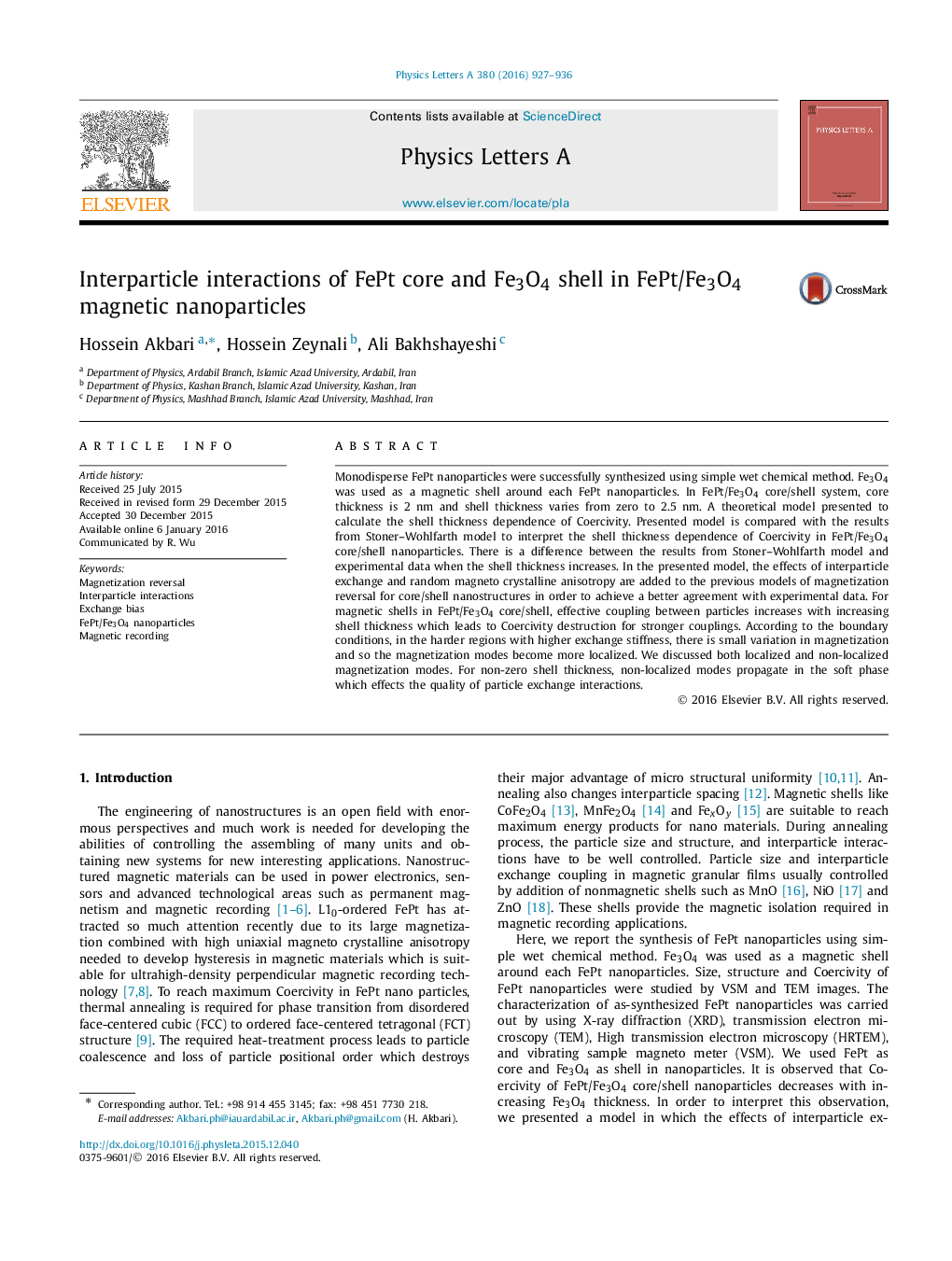| کد مقاله | کد نشریه | سال انتشار | مقاله انگلیسی | نسخه تمام متن |
|---|---|---|---|---|
| 1859494 | 1530556 | 2016 | 10 صفحه PDF | دانلود رایگان |

• Monodisperse FePt nanoparticles were successfully synthesized using simple wet chemical method.
• Fe3O4 was used as a magnetic shell around each FePt nanoparticles.
• A theoretical model presented to calculate the shell thickness dependence of Coercivity.
• Magnetic shells increase effective coupling between particles with increasing shell thickness.
• Magnetization modes are more localized in the regions with higher exchange stiffness.
Monodisperse FePt nanoparticles were successfully synthesized using simple wet chemical method. Fe3O4 was used as a magnetic shell around each FePt nanoparticles. In FePt/Fe3O4 core/shell system, core thickness is 2 nm and shell thickness varies from zero to 2.5 nm. A theoretical model presented to calculate the shell thickness dependence of Coercivity. Presented model is compared with the results from Stoner–Wohlfarth model to interpret the shell thickness dependence of Coercivity in FePt/Fe3O4 core/shell nanoparticles. There is a difference between the results from Stoner–Wohlfarth model and experimental data when the shell thickness increases. In the presented model, the effects of interparticle exchange and random magneto crystalline anisotropy are added to the previous models of magnetization reversal for core/shell nanostructures in order to achieve a better agreement with experimental data. For magnetic shells in FePt/Fe3O4 core/shell, effective coupling between particles increases with increasing shell thickness which leads to Coercivity destruction for stronger couplings. According to the boundary conditions, in the harder regions with higher exchange stiffness, there is small variation in magnetization and so the magnetization modes become more localized. We discussed both localized and non-localized magnetization modes. For non-zero shell thickness, non-localized modes propagate in the soft phase which effects the quality of particle exchange interactions.
Journal: Physics Letters A - Volume 380, Issues 7–8, 22 February 2016, Pages 927–936